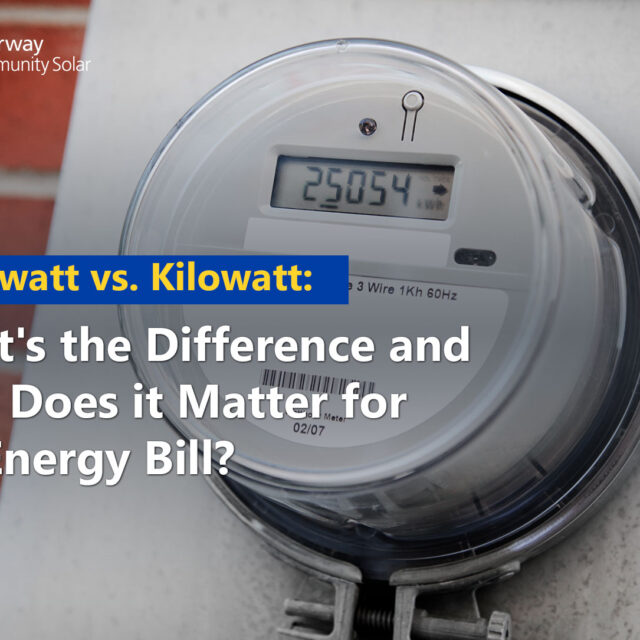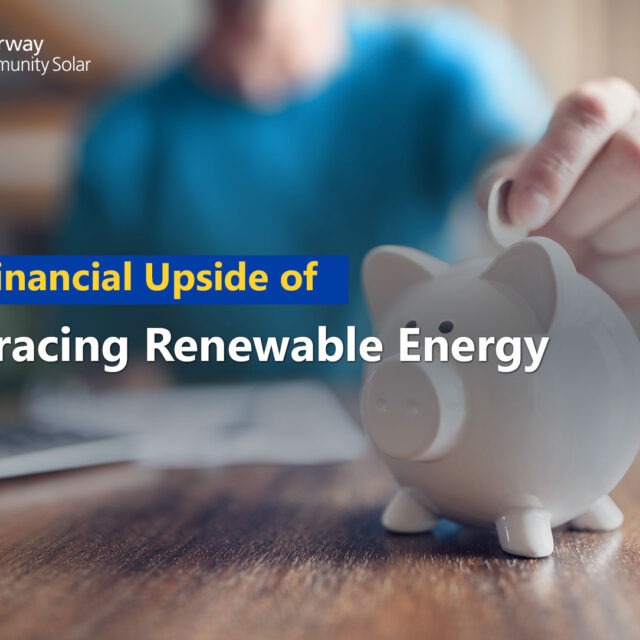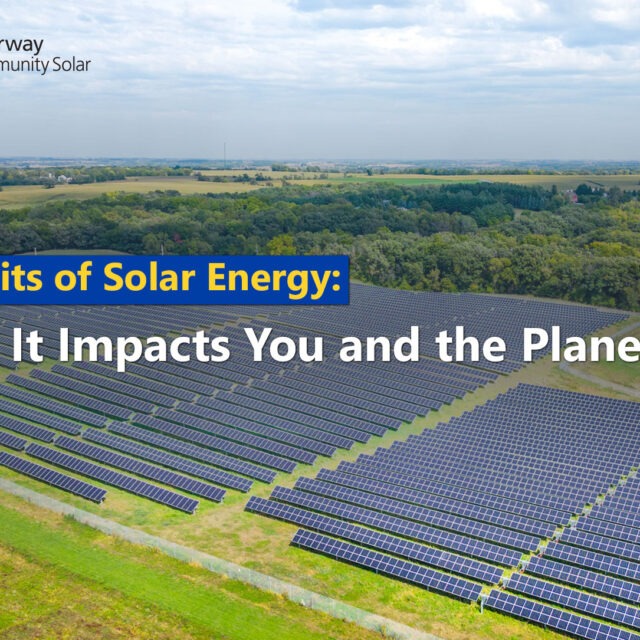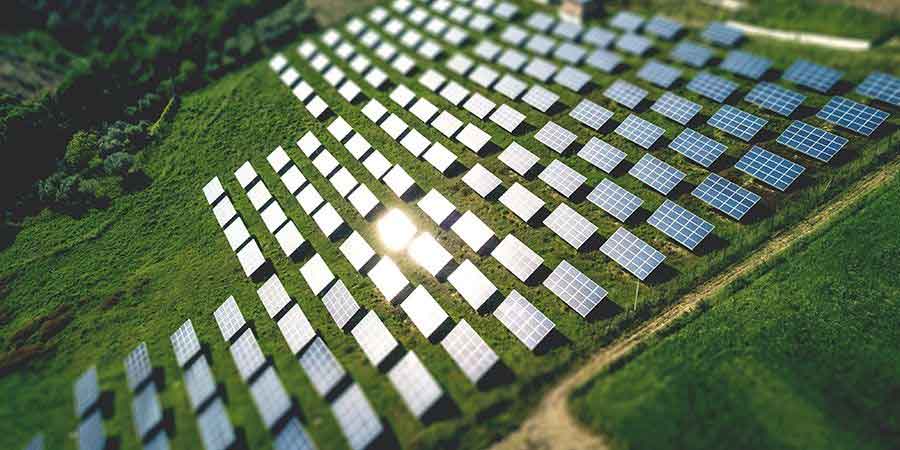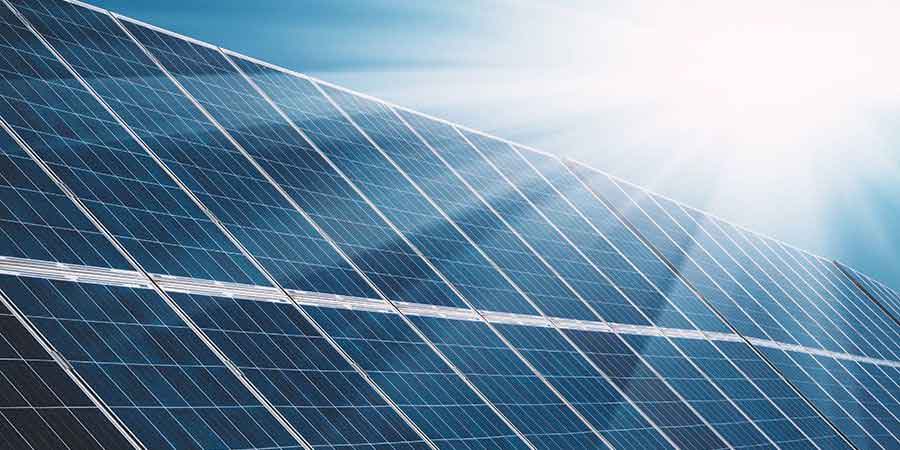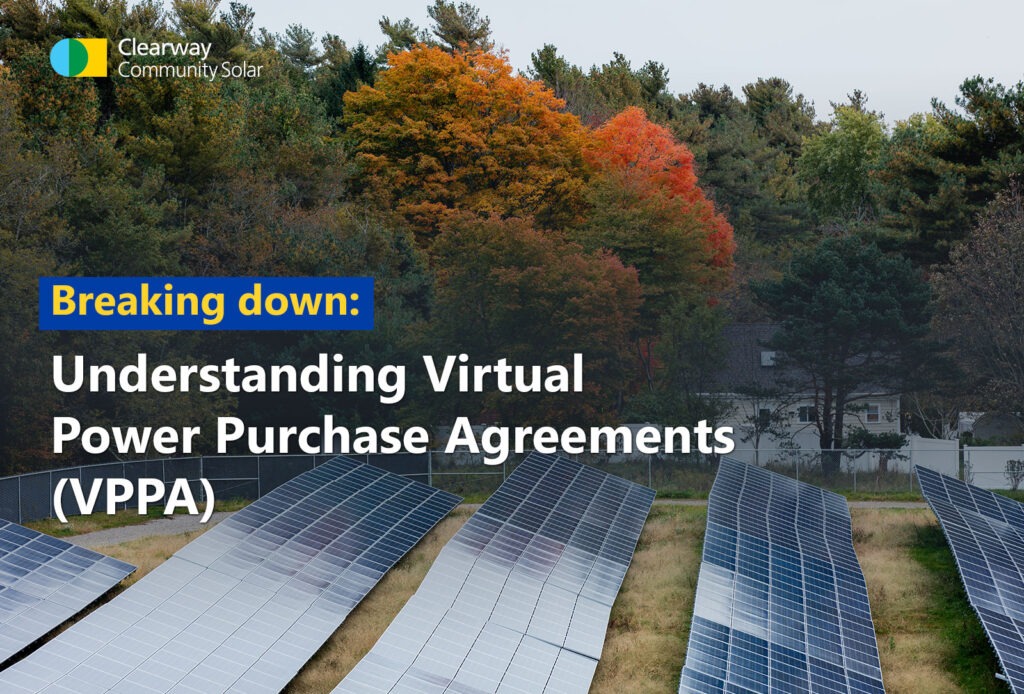
As more and more businesses look to reduce their carbon footprints and stabilize their energy costs, virtual power purchase agreements (VPPAs) have emerged as powerful tools for driving the adoption of renewable energy sources.
For example, in 2023, Bristol Myers Squibb, a global biopharmaceutical company, announced a 15-year VPPA with National Grid Renewables, putting them closer to their goal of relying on 100% renewable energy by 2030.
What Exactly is a Virtual Power Purchase Agreement?
A VPPA is a financial contract that helps businesses, governments, and institutions support renewable energy projects without needing to install onsite turbines or solar panels. Instead of directly receiving electricity, buyers agree to purchase power at a fixed price from a renewable energy developer. This helps stabilize energy costs while funding new wind and solar projects. In return, buyers receive Renewable Energy Credits (RECs), which allow them to claim the use of renewable electricity and meet sustainability goals.
Virtual PPAs (VPPAs) vs. Physical PPAs
Companies looking to source renewable energy typically choose between two main types of power purchase agreements: Virtual PPAs and Physical PPAs. While both support sustainability goals and provide RECs, they differ in how energy is delivered, where projects are located, and how financial settlements work. Here’s a breakdown of the key differences.
| Feature | Virtual PPA | Physical PPA |
| Energy Delivery | No physical delivery; energy sold to the energy market | Direct delivery to the buyer |
| Location | Can be anywhere (offsite) | Must be near the buyer |
| Financial Structure | Fixed-price contract with market settlements (strike price) | Direct purchase of electricity at agreed upon rate |
| Renewable Energy Certificates (RECs) | Buyer receives RECs | Buyer receives RECs |
| Risk Exposure | Market price fluctuation risk | Lower risk due to direct purchase |
How Do Virtual Power Purchase Agreements (VPPA) Work?
A VPPA is a long-term contract between an energy buyer — typically a corporation or institution — and a renewable energy developer. Here’s how the process works:
- Signing the Agreement: The buyer and developer agree on a fixed price (known as the strike price) for the electricity generated over a period of around 10-20 years.
- Generating Renewable Energy: The developer builds and operates a renewable energy project, such as a wind or solar farm.
- Selling Energy to the Grid: Instead of delivering energy directly to the buyer, the developer sells it into the wholesale market.
- Financial Settlement: Market prices for electricity fluctuate. If the market price is higher than the strike price, the developer pays the difference to the buyer. If it’s lower, the buyer pays the developer the shortfall. This creates a hedge against energy price volatility.
- Receiving Environmental Benefits: The buyer receives RECs, which can be used to claim the use of renewable electricity, helping meet sustainability goals and demonstrating commitment to responsible energy use.
By participating in a VPPA, organizations help bring more renewable energy onto the grid while locking in predictable energy costs and enhancing their environmental impact.
The Benefits of a Virtual Power Purchase Agreement
Of course, the obvious benefit of a VPPA is being able to rely on green power sources rather than options like fossil fuels. However, the benefits of entering into a VPPA extend far beyond sustainability.
Meeting Sustainability Goals
VPPAs help organizations reduce their carbon footprint and reach their renewable energy goals by funding renewable energy projects. By purchasing RECs, companies can credibly claim the use of renewable electricity, improving their environmental impact and public image.
Financial Hedge
Electricity prices fluctuate due to market conditions, but VPPAs provide price stability. By locking in a fixed price for power, companies can better forecast energy costs, reducing financial uncertainty.
Flexibility
Unlike physical PPAs, the virtual structure means companies don’t have to be in the same location as the renewable project. This offsite approach allows businesses to support projects anywhere, increasing access to renewable energy.
Environmental Impact
By participating in a VPPA, buyers directly contribute to new renewable energy development, which helps transition the grid away from fossil fuels and reduces greenhouse gas emissions.
Who Uses VPPAs and Why?
Corporate Buyers and Large Institutions
Major corporations, universities, and governments use VPPAs to achieve sustainability goals, hedge against energy price volatility, and demonstrate environmental leadership while ensuring a reliable energy supply.
Renewable Energy Developers
Developers use VPPAs to secure financing for new projects, ensuring a steady revenue stream that supports the construction of wind, solar, and other renewable energy facilities.
Nonprofits and Public Agencies
Nonprofit organizations, municipalities, and public agencies also leverage VPPAs to reduce their carbon footprint and stabilize long-term energy costs. Local governments and transit agencies, for example, use VPPAs to source renewable power for public operations while advancing climate action goals.
Investors and Sustainability Funds
Investment groups and sustainability-focused funds participate in VPPAs as a way to support clean energy infrastructure while mitigating financial risk. These agreements provide a predictable revenue stream for renewable projects, making them an attractive option for investors looking to align with environmental, social, and governance (ESG) principles.
The Challenges of VPPAs
While VPPAs offer significant benefits, they also come with complexities that companies must carefully evaluate. These agreements require a deep understanding of energy markets, long-term planning, and financial considerations. Before committing to an agreement, organizations should be aware of the following challenges:
- Market Risk: Electricity prices fluctuate, which can impact the financial returns of a VPPA, especially if market prices drop below the agreed-upon rate.
- Complexity: Structuring and negotiating a VPPA involves legal, financial, and energy market expertise, making it a more intricate process than traditional energy procurement.
- Long-Term Commitment: VPPAs typically span 10-20 years, requiring companies to align their energy strategy with long-term business goals.
- Accounting & Financial Reporting: VPPAs can affect how a company reports its finances, which may require expert guidance to stay compliant with regulations and accounting standards.
How to Get Involved with a VPPA
Entering into a VPPA is a strategic decision that requires careful planning and collaboration. Organizations interested in pursuing a VPPA should follow these key steps:
- Define Your Sustainability Goals: Identify how sustainability fits into your company’s broader environmental and corporate responsibility initiatives. Determine the desired impact, such as reducing carbon emissions or achieving 100% renewable energy sourcing.
- Evaluate Your Financial Considerations: Assess the potential risks and rewards of a VPPA, including market price fluctuations and long-term cost stability. Consulting with financial experts can help ensure the agreement aligns with your organization’s budget and investment strategy.
- Select the Right Partner: Partner with a reputable renewable energy developer or advisor who can guide you through contract structuring and project selection. Look for experienced providers with a strong track record in delivering successful VPPAs.
- Understand the Regulatory and Accounting Implications: Work with legal and financial teams to manage any reporting requirements, tax considerations, and compliance obligations associated with the agreement.
- Monitor Energy Markets and Policy Trends: Keep an eye on any market trends, policy changes, and regulatory shifts that could impact the financial performance of your VPPA over time. Regular reviews can help mitigate risks.
By taking a strategic approach, businesses can successfully navigate the VPPA process and maximize both environmental and financial advantages.
VPPA and Community Solar
Similar to how VPPAs help large institutions drive clean power adoption, Clearway Community Solar makes renewable energy accessible to individuals and small businesses. By subscribing to a community solar farm, customers support local solar projects without physically installing panels, complementing the broader mission of making clean energy widely available.
Getting Started With Clearway Community Solar
For those searching for an accessible renewable energy solution, Clearway Community Solar offers an easy way to support solar energy without the complexity of a VPPA. By subscribing, customers receive bill credits for locally produced solar power, reducing reliance on fossil fuels while lowering electricity costs.
Explore how you can join Clearway Community Solar and take a step toward a cleaner energy future today.
